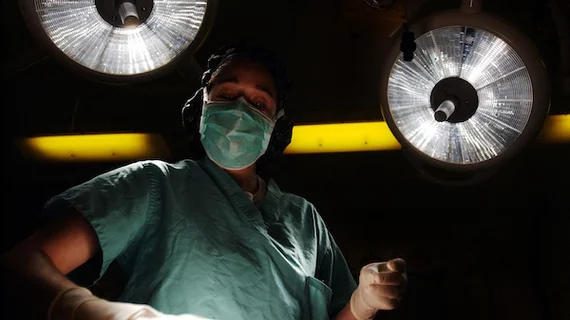Outcomes ‘worse than expected’ when TAVR fails and surgery is required
Transcatheter aortic valve replacement (TAVR) has gained considerable popularity in recent years, but device failures still occur from time to time, leading to a second TAVR or a surgical aortic valve replacement (SAVR).
To track how such failures impacted outcomes, researchers tracked 123 patients who underwent SAVR following a failed TAVR, sharing their findings in JACC: Cardiovascular Interventions. All data came from the Society of Thoracic Surgeons Adult Cardiac Surgery Database (STS ACSD), and the procedures took place between July 2011 and March 2015.
While 17% of patients undergoing SAVR had a low pre-operative risk of mortality, 24% had an intermediate risk and 59% had a high risk. Also, SAVR was performed on an elective basis for 76% of low-risk patients and 57% of intermediate-risk patients. For high-risk patients, however, 76% of procedures were “urgent, emergent or emergent salvage cases.”
The mortality rate for these patients was 17%, which is “higher than would be expected in a similar population of patients undergoing repeat SAVR.” In addition, the median operation time was 321 minutes, more than two hour longer than a typical SAVR.
“Although the reason for this additional two hours of operative time cannot be gleaned from the STS ACSD, it may be related to technical challenges associated with performing redo sternotomies, as approximately one-quarter of patients had undergone prior coronary artery bypass grafting, or challenges associated with removal of the previous TAVR device,” wrote lead author Oliver K. Jawitz, MD, Duke University Medical Center in Durham, North Carolina, and colleagues.
The researchers did note that their work had certain limitations. For example, data was unavailable on the exact model of each device, limiting what could be taken away from the team’s findings. Also, “inaccuracies in coding may have prevented some patients who underwent SAVR after TAVR from being included in our cohort.”
Overall, though, the findings still showcase why it is crucial for researchers to keep exploring new, improved methods of treatment following a failed TAVR.
“In this study … we have demonstrated that SAVR following TAVR is associated with worse-than-expected outcomes—possibly related to the added complexity of removing a well-incorporated TAVR prosthesis,” the authors concluded. “Continued experience with this developing technology will help to further define optimal treatment options in the setting of failed TAVR prostheses.”
The full analysis is available here.

